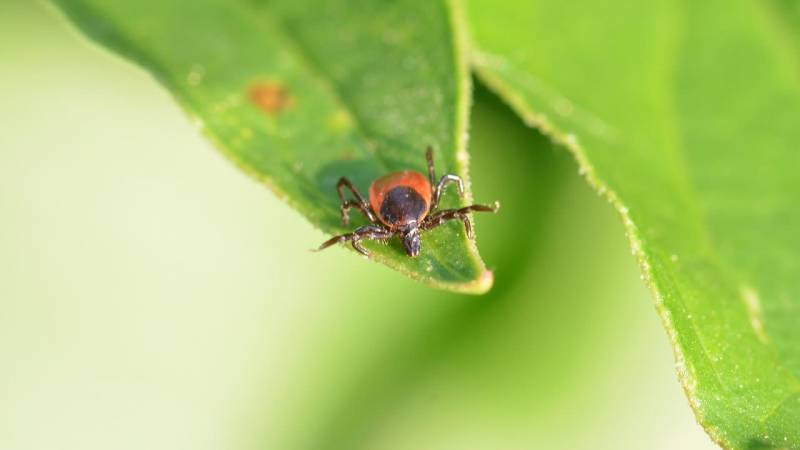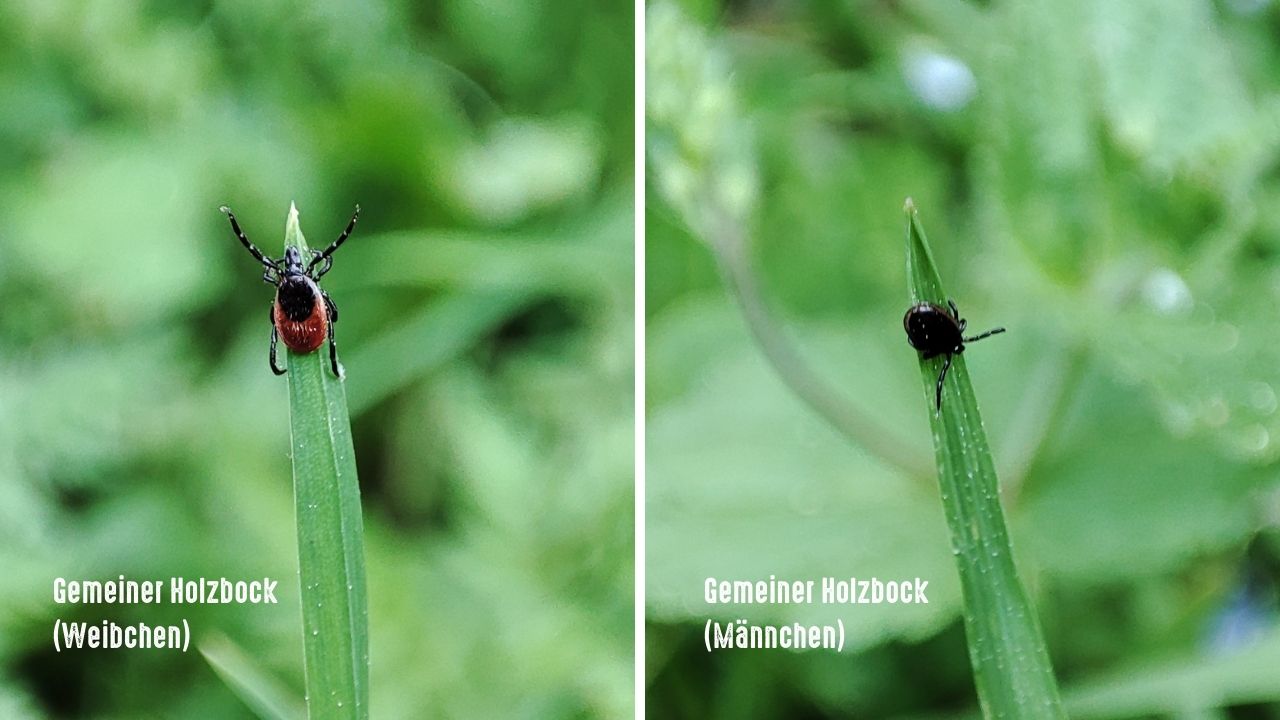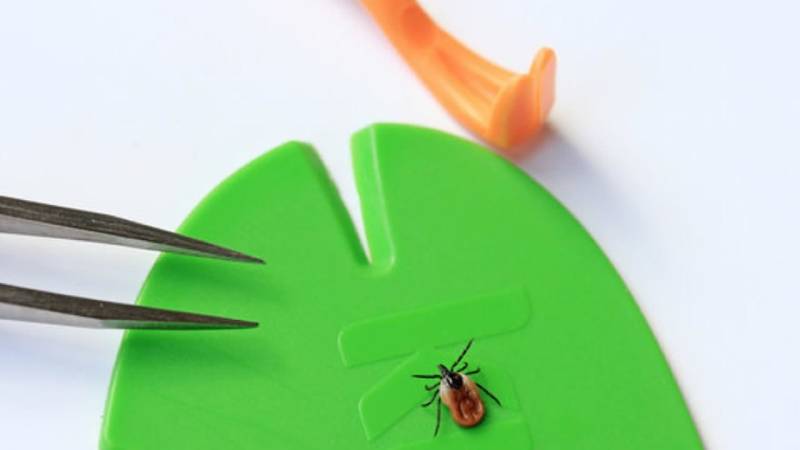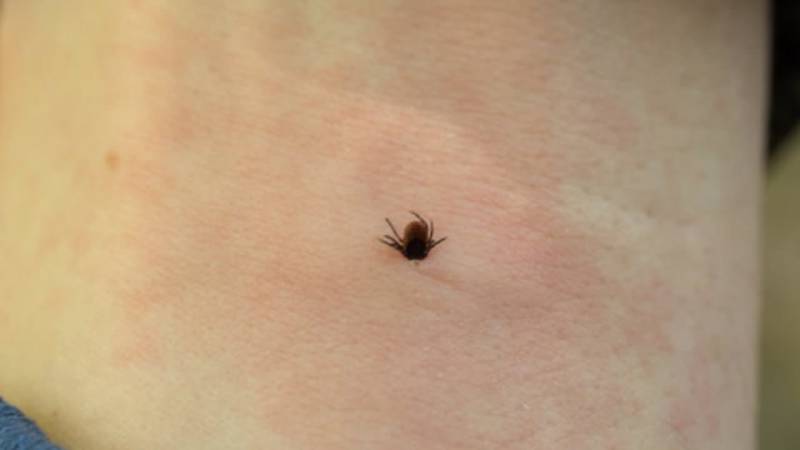
Ticks: How you protect yourself and remove them
👉 The key facts from this guide
- Ticks primarily transmit two diseases: tick-borne encephalitis (TBE) and Lyme disease.
- TBE can progress severely or fatally, but there is a vaccine against it.
- Lyme disease is transmitted by a bacterium and can be treated with antibiotics.
- Preventive measures against ticks include TBE vaccination, avoiding tick habitats, wearing appropriate clothing, and using tick sprays.
- If you are bitten by a tick, you should remove it gently. Use a tick tweezers and slowly and carefully pull the tick out of the skin. Avoid sudden movements and do not squeeze the tick.
- After a tick bite, you should check the puncture site daily for up to four weeks. If you notice unusual skin redness or flu-like symptoms, you should immediately consult a doctor.
- Home remedies such as black seed oil or coconut oil are not scientifically proven and should not be used as the sole protection against ticks.
- Ticks are not only active in spring and summer but also in milder weather. They freeze in low temperatures and become active again at temperatures of approximately 8 degrees Celsius.
Ticks are often found in forests and fields, especially in Central Europe.
As a bushcrafter and forest friend, you won't be able to avoid this topic.
You should never take a tick bite lightly.
How to protect yourself from ticks and what to do if you have already been bitten, you will learn in this article.
Which diseases are transmitted by ticks?
I can still remember the spring of 2019 well.
It was an April and the first warmth was coming.
But the ticks also woke up.
My count resulted in the following:
7 ticks on the body after one night.
50 collected by me in total within 24 hours.
It was brutal.
I had never experienced anything like this before.
And the fact is: Ticks in Europe primarily transmit two diseases.
Early summer meningoencephalitis (abbreviated as TBE) is caused by viruses and can be severe or even fatal.
In the central European core area, on average, every two-hundredth tick is infected with FSME viruses. The viruses are transmitted through a tick bite but cannot be passed from person to person.
1–2% of the affected people die from TBE. The rest often suffer severe damage or paralysis. Fortunately, there is a vaccine against TBE. A vaccination is primarily recommended for people who spend a lot of time outdoors in the core area.
The other disease is Lyme disease, for which there is no vaccine. However, Lyme disease is transmitted by a bacterium, so it can be effectively treated with antibiotics. Attention: Not only ticks transmit Lyme disease. In rare cases, you can also get it from a mosquito bite.

What preventive measures protect me?
If you spend a lot of time in the forest, you should definitely get a TBE vaccination. This way, you have already eliminated the biggest risk. Make sure that the vaccination needs to be refreshed approximately every five years.
Try to avoid favorite spots of ticks in nature. They particularly like to stay in the warm leaf litter of the forest floor. High, unmown meadows are also typical tick areas.
Pay attention to the right clothing. Long sleeves and long pants cover your skin. It's best to also pull your socks over the pant legs. Rubber boots have also proven effective against ticks. Wear light-colored clothing if possible. This makes it easy to spot the small ticks immediately.
You can find a range of tick sprays in stores. Ticks do not like their smell, so you should spray yourself with it before your adventure.
However, you need to renew the spray regularly – refer to the instructions for the spray. The advantage: Even mosquitoes are kept away by these sprays.
I recommend this for spraying.
Fact is: It really works.
If a tick crawls up your pant leg, it will die within the next 30 seconds. And I have thoroughly tested this and was amazed that I finally found a language that actually works!
And this one for rubbing in, also suitable for children:
Home remedies such as black cumin oil or coconut oil are primarily discussed online as remedies against ticks.
But you shouldn't rely on that, as the effectiveness is not scientifically proven. These remedies have never helped me.
After your time in nature, you must thoroughly check your entire body for ticks.
If there are two of you, it's best to help each other with this. Ticks prefer thin and warm areas of skin.
So look especially well in the back of the knees, the intimate area, as well as on the stomach and chest.
Read also
Can I protect myself from mosquitoes and parasites with mud and sludge? – In this guide, you will learn whether mud and sludge can protect you from mosquitoes and parasites. You will also get to know other protective measures.
How do I properly remove a tick?
Rely on your eyes for your regular check-up and less on your feelings.
Often, you don't even feel a tick bite. If you get bitten by a tick despite all precautions, you need to remove it carefully.
Here is a graphic of the popular spots for ticks.

Tick remover
To avoid wasting time, it's best to always carry a tick remover with you (you can get it here).
This way, you can remove them directly in nature and give Lyme disease no chance. It is only transmitted about 12 hours after the bite.
You must grasp the tick as close to the skin as possible with the tweezers. Then, pull the tick slowly and carefully out of the skin.
Under no circumstances make any jerky movements. Turning is also not necessary. The mouthparts of ticks do not have threads.
This controlled approach is important to avoid squeezing the tick. In this case, it would release dangerous body fluids under your skin. Of course, you definitely want to avoid that.

If you don't succeed in removing it immediately, don't lose patience right away. It often takes several attempts to remove a tick. If you have difficulty reaching the spot, ask a companion for help.
Alcohol, Gasoline and Co
There are a number of methods circulating on the internet for tick removal, such as alcohol, gasoline, or nail polish remover.
These are completely ineffective for removal.
On the contrary, they even increase the risk of transmission. So: hands off such experiments!
Alcohol or iodine is only used once the tick has already been removed. These substances help to soothe the skin and disinfect it.
Many people are affected by more than one tick. So, after removing one, do not give up on precautions and searching for additional ticks.
Sometimes the tick's proboscis gets stuck in the skin. It will be expelled later.
So it doesn't matter if the proboscis breaks off during removal. The important thing is THAT the tick is removed.
Ok, but how do I do that on my trips now? What is the exact procedure?
How to keep ticks away...
My family and I always romp through tick-infested areas like tall weeds, overgrown forests, and dense underbrush.
Strictly speaking, we are always in tick areas as soon as we go outside. But we take a number of measures to prevent ticks.
First:
I treat our shoes and pants with NOBITE spray (https://amzn.to/3AXdTqO).
I dislike chemicals almost as much as ticks, but at least this stuff isn't sprayed directly on my skin.
Instead, I spray it on my clothes. According to the instructions, it protects impregnated clothing for up to a month from ticks, mosquitoes, and sandflies. If you don't want to use chemicals, I've also had success with cedar oil and tea tree oil.
Optionally, I also use NOBITE for the skin (https://amzn.to/3JA2dPp).
Secondly:
We all wear long pants and tuck them into our socks. This strategy ensures that ticks stay on our clothing and do not secretly crawl up our legs to reach their preferred body parts.
It is also a good idea to tuck your shirt into your pants. (Also, tie your long hair into a ponytail.)
Third:
I constantly check my children to see if I notice anything. But some ticks, especially in the nymph stage, are almost impossible to detect.
When we get home...
First:
We all strip down to our underwear and do a thorough tick check as a family. We take turns looking at each other.
Secondly:
All clothing goes into the dryer and is dried on the hottest setting for at least 60 minutes. This kills all ticks hiding in the folds of the clothing.
Third:
We jump in the shower. When I'm alone, I use a hand mirror to check areas I can't see myself. A shower can wash away hidden ticks that haven't attached yet, and it's also the perfect opportunity for a thorough tick check.
What to do if a tick is attached to the skin ...
First:
Forget home remedies. Simply use a pointed tweezer and grab the tick as close to the skin as possible and pull it straight out.
I like the 3-piece tick remover set made of stainless steel and have successfully removed countless ticks with it. Wash the area with a little soap and water and clean it with alcohol.
Secondly:
Keep the tick in a resealable bag. This way, the tick can be tested if necessary or if unusual symptoms occur (pain, fever, headache, etc.).
Thirdly:
Sometimes I send an embedded tick for examination to be sure. The testing center I use is this one: https://www.meindirektlabor.de/labortests/borreliose/ or this one https://www.mlhb.de/labor/schwerpunkte/zeckenlabor
However, keep in mind that even if your tick tests positive for a disease, it does not mean that you will get it. On the other hand, some tick-borne diseases can take weeks to develop.
If you have a general practitioner, it is a good idea to call them. Based on your personal history and relationship, they can suggest a course of action. In any case, it is advisable to have it on their radar in case any symptoms of any kind appear, so they can respond quickly.
When conducting a tick check...
Fact is: Ticks prefer moist and soft folds the most.
They also like to hide directly behind the waistband of the underwear. Below are the areas you should examine particularly well, either before or during your shower:
- Under the arms
- In and around the ears
- In the belly button
- Behind the knees
- In and around the hair (especially at the hairline)
- Between the legs
- Around the waist
It's easy to become careless and not take precautions or conduct thorough checks when you come home.
I know it's tedious, and I know ticks are unpleasant – but try not to let them spoil your love for nature, especially at this time of year. If you follow these simple guidelines, you will beat them in most cases.
What symptoms should prompt me to see a doctor?
Check a puncture site daily for up to four weeks. If you notice any unusual skin redness, you must see a doctor immediately.

Lyme disease, in particular, becomes noticeable in the first days to weeks through a redness around the skin area. This redness grows larger and fades in the center. A red ring forms. In this early phase, Lyme disease can be excellently treated with antibiotics.
Both in TBE and Lyme disease, flu-like symptoms may occur in the first few days.
This includes fever, headaches, or fatigue. The same applies here: If you notice anything unusual, see a doctor immediately.
Conclusion
So you see: With a few precautions, the danger of ticks can be well contained.
Prophylaxis before your trip into nature is just as important as meticulous checks afterwards.
Nothing stands in the way of your adventure in Central European nature, and you don't need to fear being infected with a disease by ticks.
What are your experiences with ticks?
Are there many in your forests and meadows?
Have you ever been bitten by a tick?


Author of the guide
Martin Gebhardt
Hey, I'm Martin. On my blog, you will learn the basics and numerous details about living in the wild. I think survival, bushcraft and the good life in nature are the keys to happiness. Find me here on Instagram or on YouTube. You can find more about my mission on the About Me page.
Was this guide helpful?
36 people found this guide helpful.
5.00 out of 5 points (36 Ratings)
Comments (0)
This post may contain affiliate links. So if you click on the links and make a purchase, I will receive a small commission at no additional cost to you. Click here, to learn more about it.



